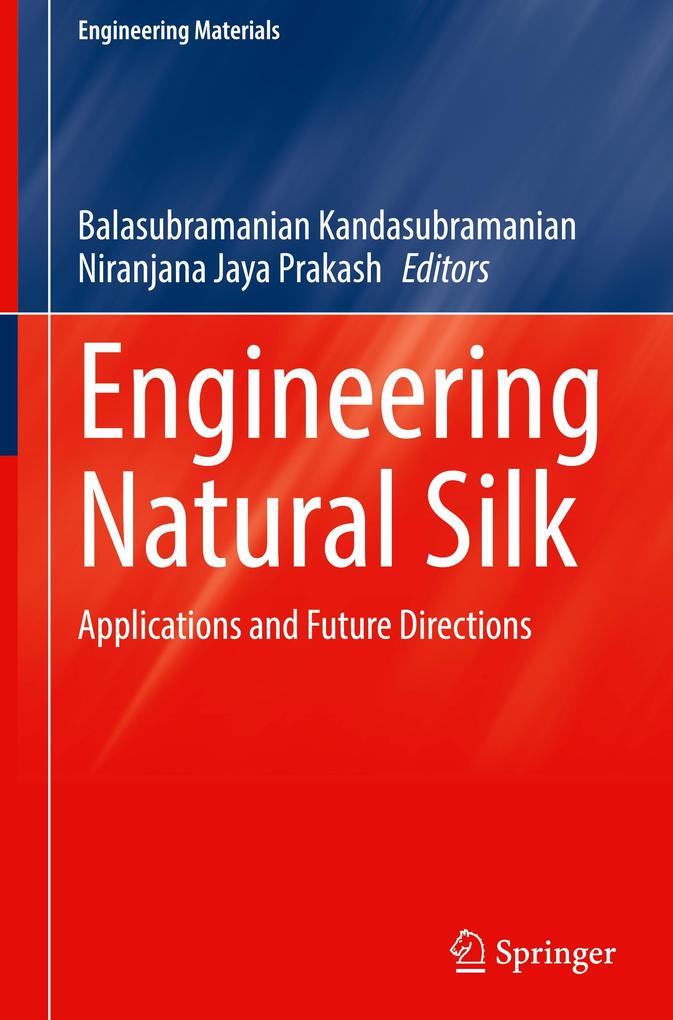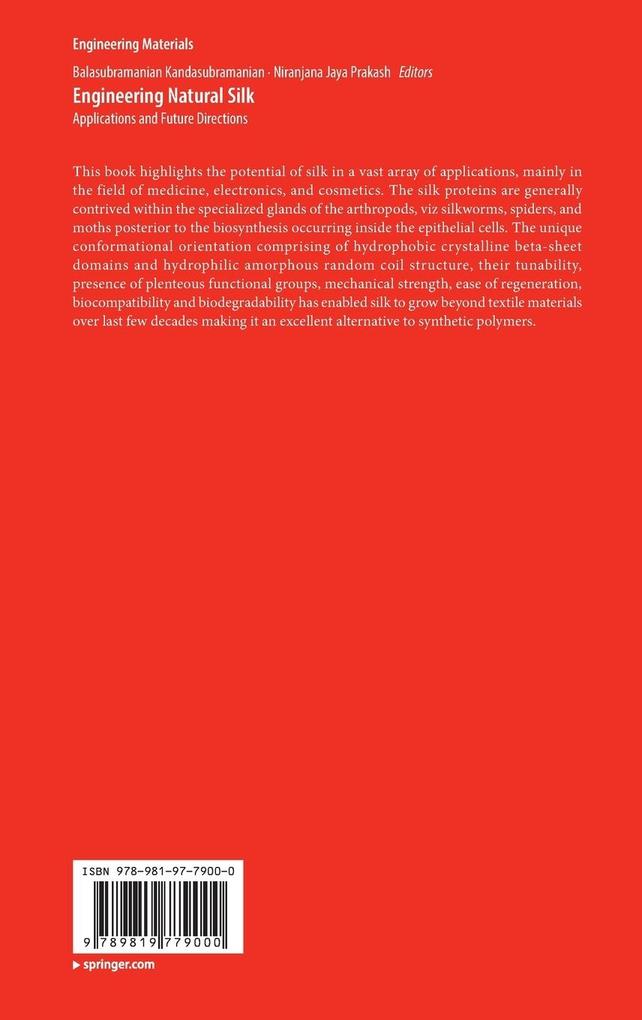
Zustellung: Mo, 28.07. - Do, 31.07.
Versand in 7 Tagen
VersandkostenfreiBestellen & in Filiale abholen:
This book highlights the potential of silk in a vast array of applications, mainly in the field of medicine, electronics, and cosmetics. The silk proteins are generally contrived within the specialized glands of the arthropods, viz silkworms, spiders, and moths posterior to the biosynthesis occurring inside the epithelial cells. The unique conformational orientation comprising of hydrophobic crystalline beta-sheet domains and hydrophilic amorphous random coil structure, their tunability, presence of plenteous functional groups, mechanical strength, ease of regeneration, biocompatibility and biodegradability has enabled silk to grow beyond textile materials over last few decades making it an excellent alternative to synthetic polymers.
Inhaltsverzeichnis
Silk: Sources & Structure. - Role of degumming and various degumming techniques. - Various morphological forms of silk fibroin. - Bio-composites of Silk. - Silk based bio-inks. - Additive manufacturing of silk. - Silk based smart materials. - Biomedical applications of Silk fibroin. - Silk for environment remediation.
Produktdetails
Erscheinungsdatum
17. November 2024
Sprache
englisch
Seitenanzahl
224
Reihe
Engineering Materials
Herausgegeben von
Balasubramanian Kandasubramanian, Niranjana Jaya Prakash
Verlag/Hersteller
Produktart
gebunden
Abbildungen
XII, 212 p. 37 illus., 32 illus. in color.
Gewicht
504 g
Größe (L/B/H)
241/160/18 mm
ISBN
9789819779000
Entdecken Sie mehr
Bewertungen
0 Bewertungen
Es wurden noch keine Bewertungen abgegeben. Schreiben Sie die erste Bewertung zu "Engineering Natural Silk" und helfen Sie damit anderen bei der Kaufentscheidung.










